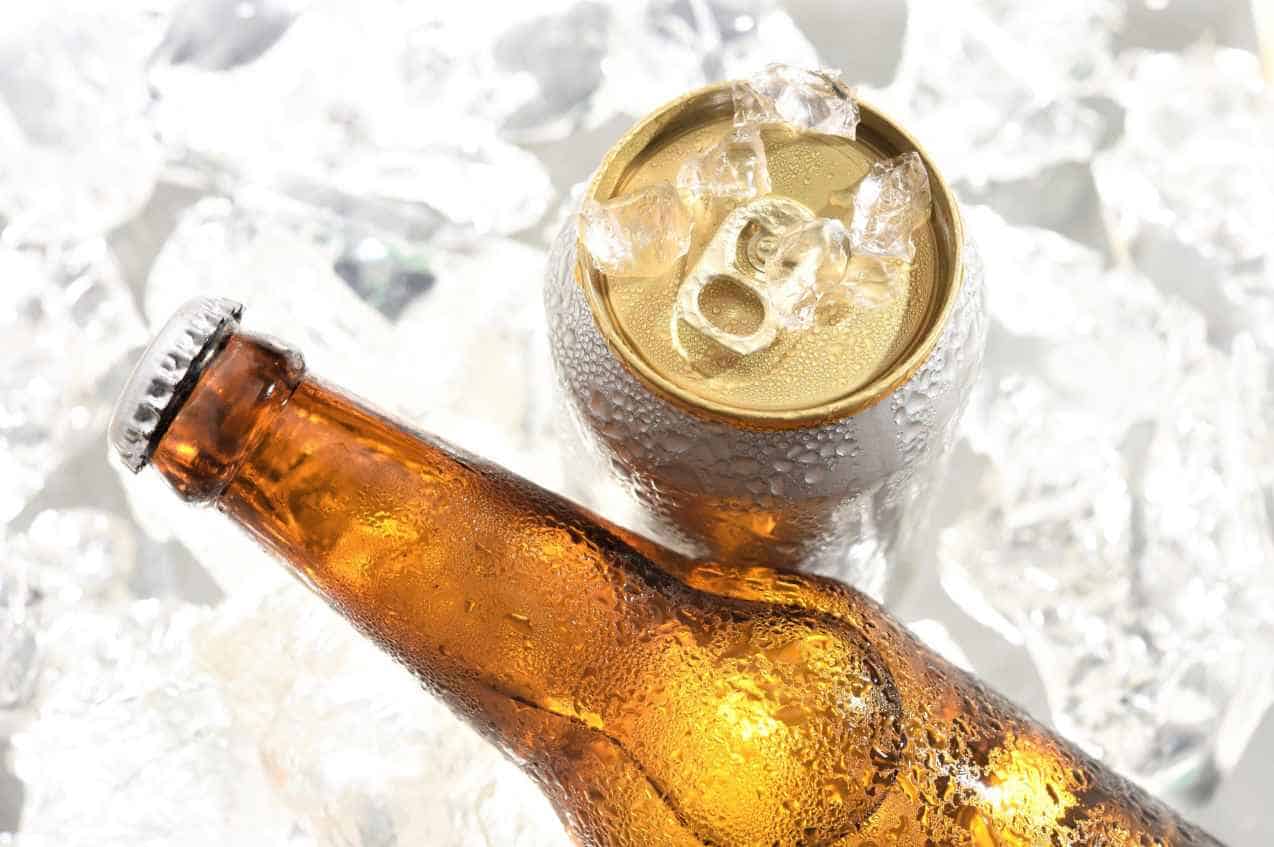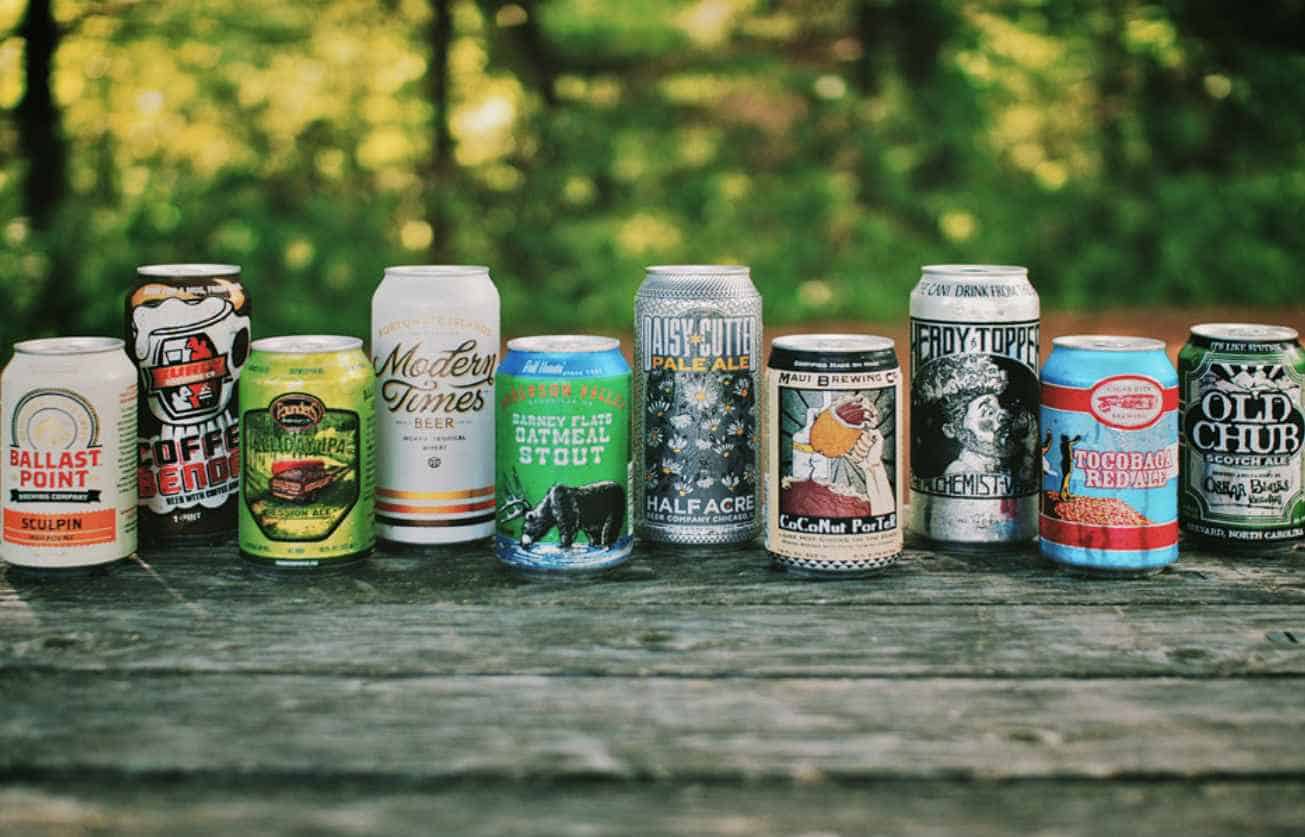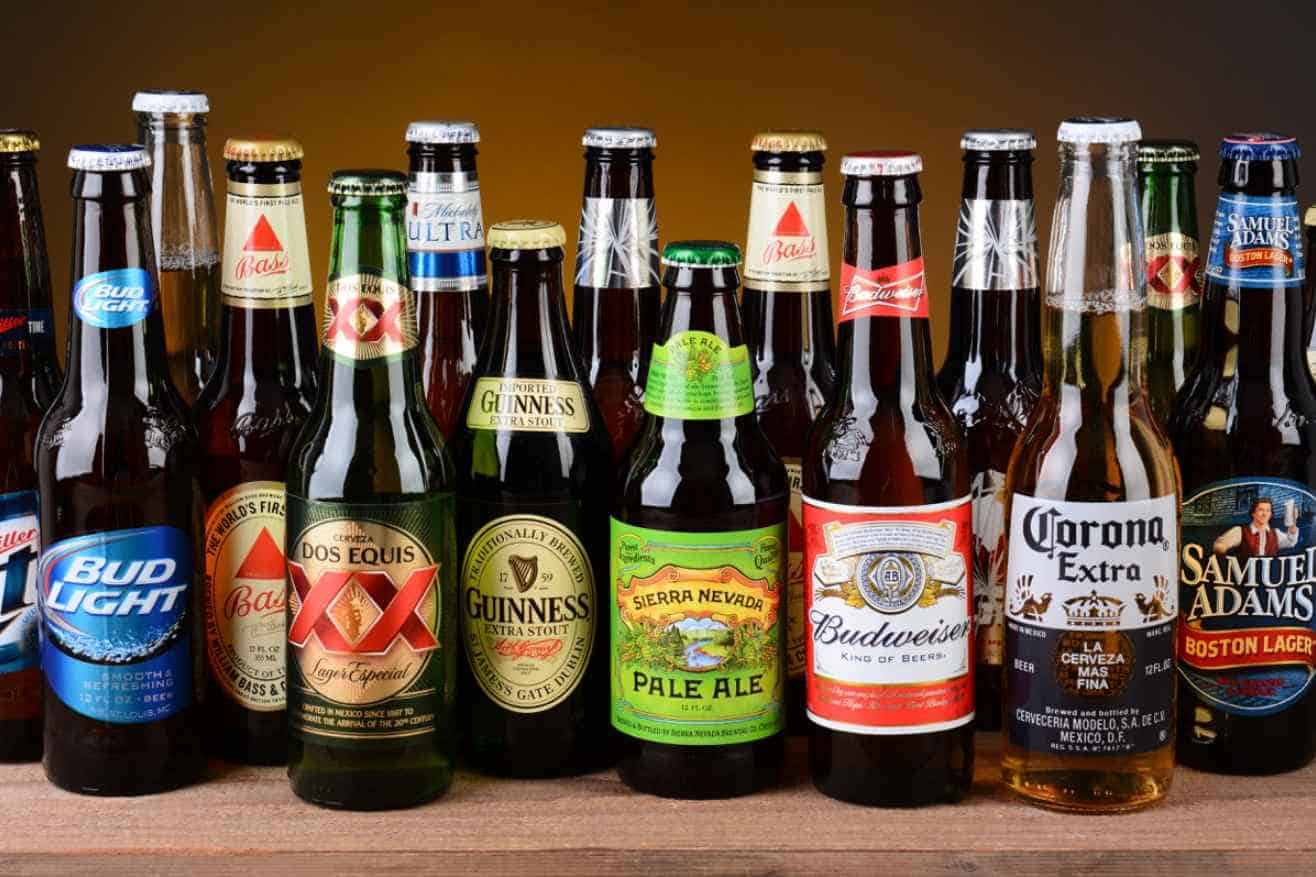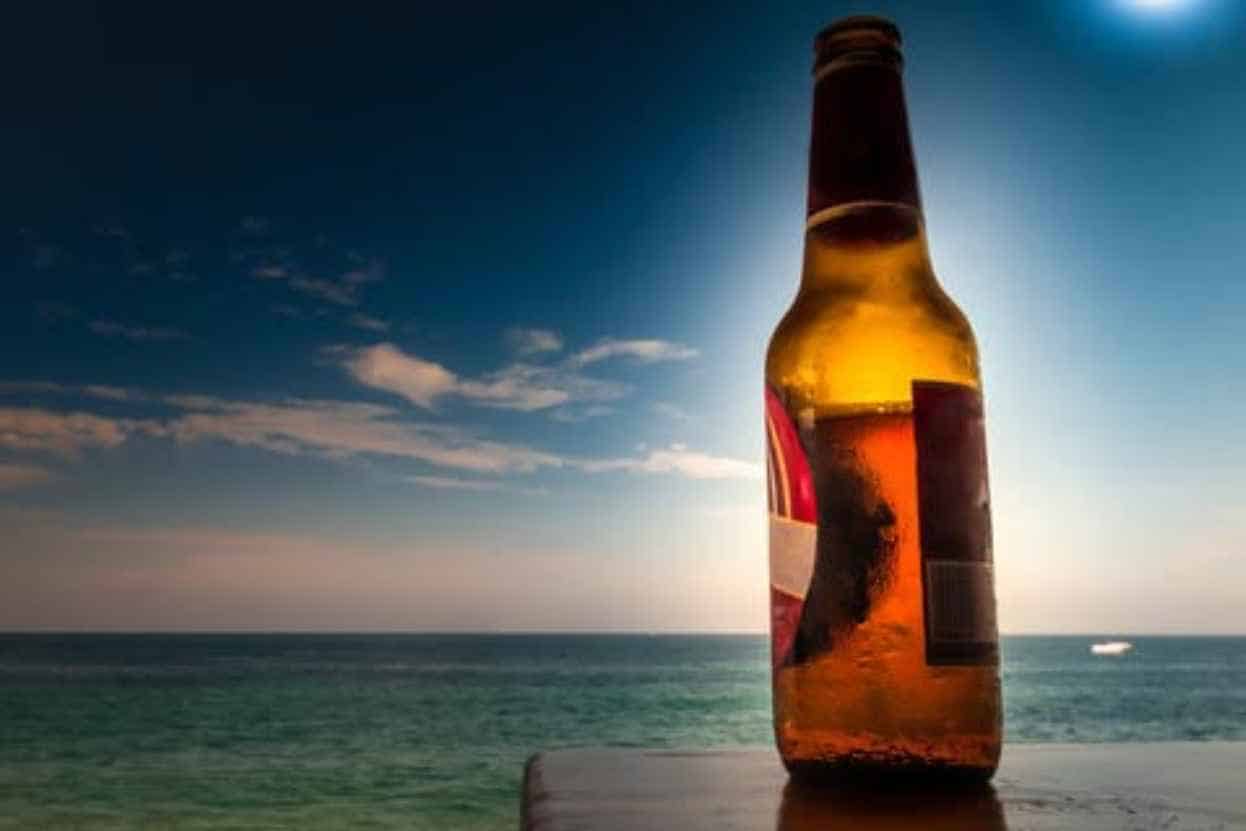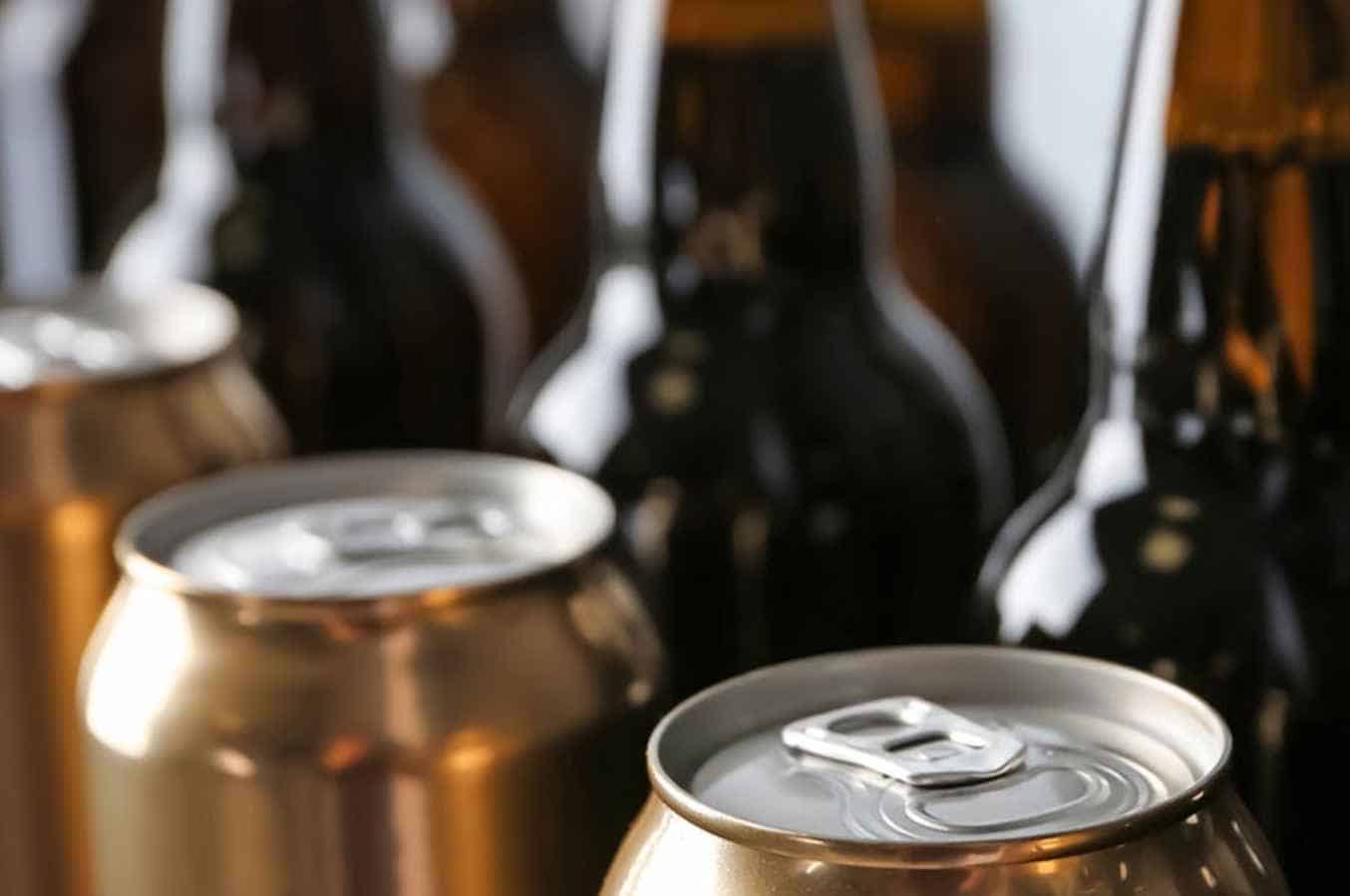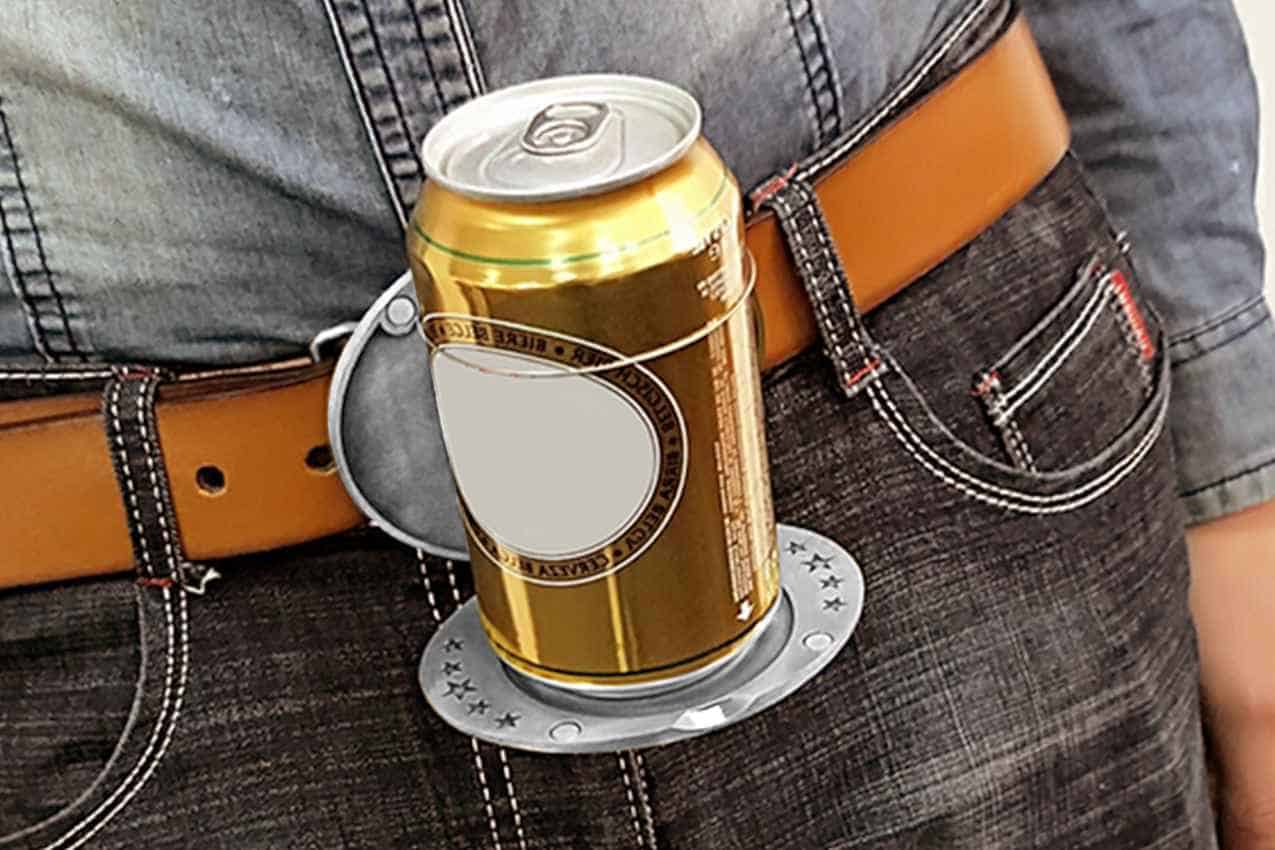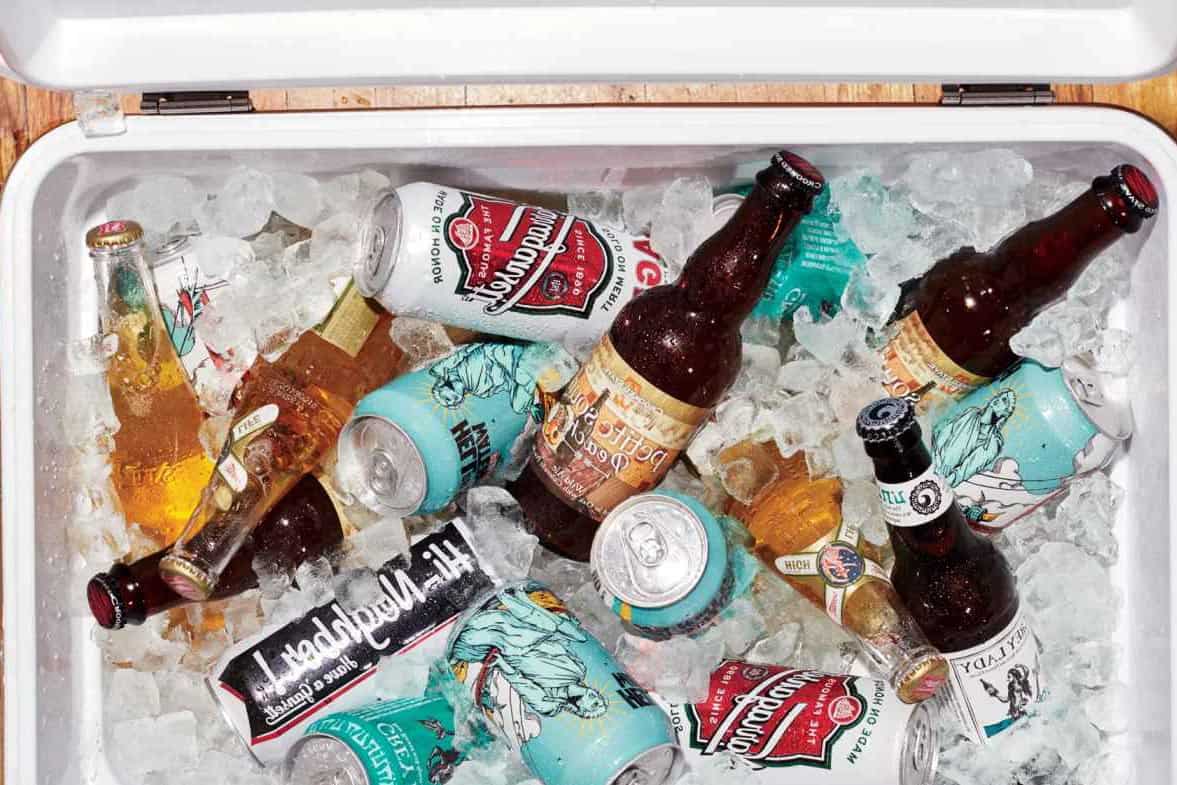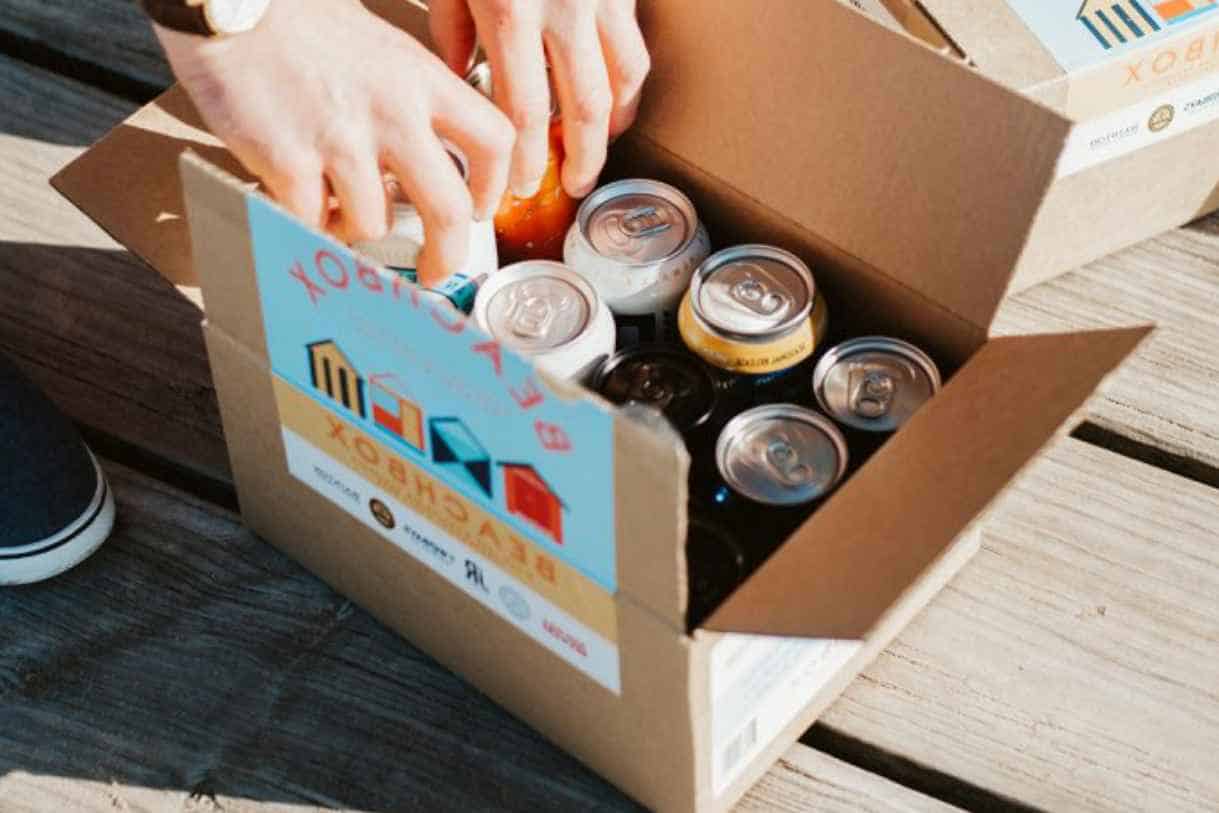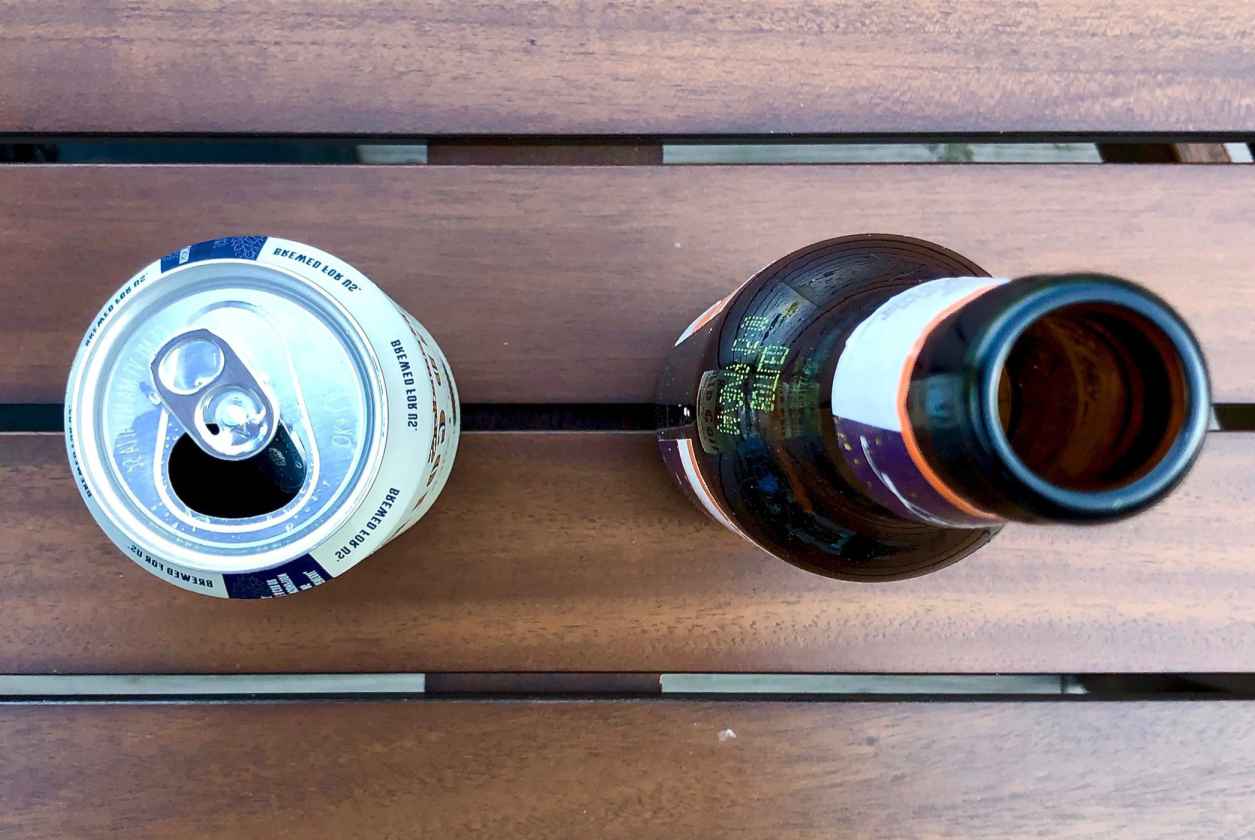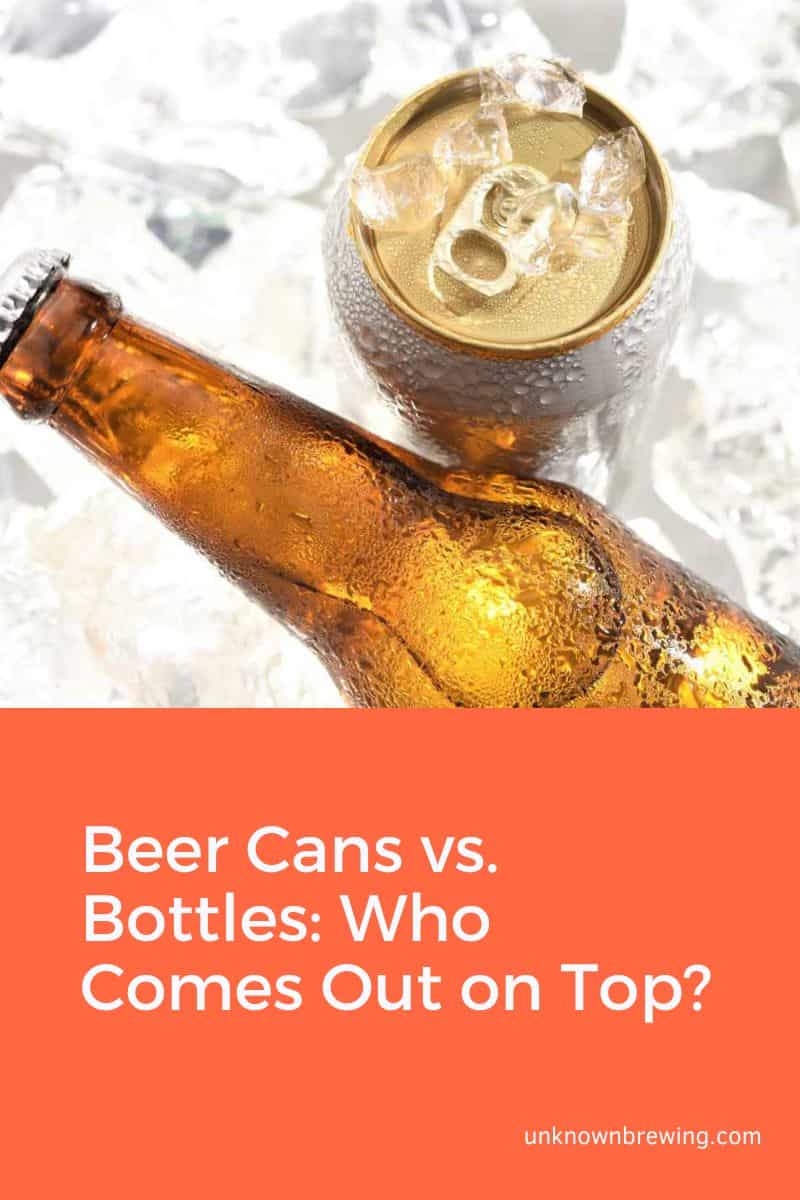For years, you’ve bought beer in cans and bottles. But have you ever wondered how well they’d perform against each other? Well, we did. And we pitted them against each other through nine grueling rounds of scrutiny.
Join us to discover which is better; beer cans or bottles. But before we head to the ring and ring the bell, let’s introduce our contestants.
Beer Cans: What Are They
A beer can is a beverage container made from aluminum alloy. Typically, beer cans contain 12 ounces of beer. However, there are 16-oz examples. Cracking open a beer can involves manipulating a pull tab to puncture the tear strip.
Beer Bottles: What Are They
Beer bottles are beverage containers that are made of glass. They typically contain 12 ounces of beer. But there are also 12-oz bottles in the market. To open a beer bottle, use a bottle opener to peel back the bottle cap.
May the games begin, beer cans vs. beer bottles!
Sunlight Protection
Beer is sensitive to sunlight. This sensitivity is the primary reason brewers ferment their worts in dark chambers. Sunlight sensitivity is also the main justification for packing beer in brown or green bottles.
When exposed for long durations, the sun’s ultraviolet rays destabilize the beer’s ingredients. Alpha acids from hops are the most affected. UV rays of the sun encourage alpha acids to react with the sulfur ions in beer. This reaction emits a smell identical to skunk spray.
Have you heard about beer getting skunky? Blame it on the ultraviolet rays of the sun. In the dark, alpha acids and sulfur exist in harmony.
Beer cans vs. beer bottles; how do our contenders fare against sunlight? One of the defining characteristics of glass is the ability to see through it. Beer bottles come in various colors and different degrees of opacity. Clear, green, or yellow beer bottles offer minimal UV light protection.
Beer cans, on the other hand, are completely opaque. They offer total sunlight protection. Beer cans are the best choice for a fun day on a sunny beach.
Verdict: Beer cans win this round.
Oxidation Protection
Apart from sunlight, other factors can compromise a beer’s freshness. Oxygen exposure or oxidation is one of those factors. For a beer to taste as good as it does, its ingredients must exist in harmony. Oxygen disturbs this stability, ruining beer color and flavor.
Oxygen reacts with the tannins and polyphenols to impart a hazy or murky beer character. Oxygen also encourages the growth of mold spores that may have found their way into the brew.
Beer cans vs. beer bottles, which one offers more oxygen protection? Beer bottles tend to leak oxygen. It may take years for the beer to spoil, but oxidation is possible. Beer cans, on the other hand, are air-tight containers; unless punctured by external forces.
Verdict: Another win for the beer cans. A bottle is more likely to spoil beer than a can.
Portability
The best memories are made in the wilderness with a beer in your hand. When hiking, you can’t strap a beer keg on your back. But you can carry a beer bottle or a beer can. Portability is a major factor to consider if you love your beer on the go.
While beer bottles and cans are highly portable, how do they compare against each other?
When it comes to portability, the lighter, the better. Beer bottles are heavier than beer cans. Beer bottles will weigh you down as you trek up a mountain. Beer bottles are more prone to breakage because glass shatters easier than aluminum cans.
Verdict: Beer cans also win this round thanks to their lighter weight and resistance to breakage.
Preserving Cold Serving Temperatures
Beer is best-served cold. Low temperatures suppress the perceived bitterness of a beer. A cold pint is more drinkable than a warm beer of the same style. The longer a beer stays out, the more bitter it becomes. Plus, many people like their lagers and ales cold.
To learn more about beer bitterness, check out our article on what makes beer bitter.
Which one keeps beer cold for longer between beer bottles and cans? Most beer bottles are made from glass. And if you can remember your Science lessons, glass is an insulator and a poor conductor of heat. Glass bottles insulate their beer contents, keeping them colder for longer.
Beer cans, on the other hand, are made from aluminum, which is a metal. Metals are excellent conductors of heat, and they can gain heat from the immediate environment. If you put two cold beers (a bottle and a can) on a sandy beach, the can will warm up faster.
Verdict: Beer bottles win this round due to their excellent insulative abilities.
Packaging Costs
Commercial breweries like to base their decisions on different factors, including cost. According to Alibaba.com, there’s no significant difference between can and bottle prices. Otherwise, we’d notice it on beer prices. A six-pack of canned beer costs about the same as a six-pack of bottled beer.
Canning beer requires machinery that costs money. A highly automated canning line costs $100,000-250,000. A fully automated beer bottling line costs between $ 40,000 -$100,000. A bottling line is cheaper than a canning line because bottling is a simpler process. Homebrewers also prefer bottling for this exact reason.
But the cost of equipment rarely affects the price of a product because it’s treated as an investment.
Verdict: It’s a tie; bottles and cans share points. As a brewer, setting up a canning line is more expensive than installing a bottling line. But as a consumer, canned and bottled beers of the same kind and quantity cost the same.
Impact on Beer Taste
Many people will have you believe that canned beer leaves a metallic taste in your mouth. Does this belief have a scientific basis, or is it just a myth? Let’s find out.
Beers in cans have no contact with the aluminum metal that makes the container. Beer cans, and other beverage cans, have plastic linings to protect the beer from corroding aluminum metal.
The aluminum can’t impart its own character to the beer. The video below demonstrates this concept quite well.
Video Source:
Beer bottles don’t have protective plastic linings because they don’t need them. Glass is a fairly non-reactive compound. It does not corrode as metal does. Glass can’t impart its own flavor to beer.
Verdict: Another tied round. Bottles and beer do not impart their own characteristics to the taste of beer.
Environmental Impact
Every player in every industry is doing their part to save the planet. As a beer consumer, you have a right to know whether bottles and cans harm the environment.
The good news is that both glass and aluminum are recyclable materials. But producing aluminum is more harmful to the environment than glass manufacture. Digging a mine involves cutting trees and destroying entire habitats. It also involves using gas-powered machines.
Producing glass isn’t as toxic to the environment. But it is heavier than aluminum. It requires more fossil fuel to transport.
Verdict: It’s a tie! Bottles and cans are environmentally friendly as long as we recycle them.
Practicality
At the end of the day, beer cans and bottles are beverage containers. But how easy are they to use?
Before you enjoy the contents of a beer can or bottle, you must open it. A beer can is easier to open than a beer bottle. You don’t need any tools to open a beer can. For beer bottles, you need a bottle opener.
As beverage containers, cans and bottles should allow you to directly drink from them. In this case, a bottle is easier to use. The mouth of a beer bottle is perfectly compatible with your lips. The cans are messy because beer spills over the lid.
Verdict: It’s another tie. Bottles and cans are equally proficient as beverage containers.
Consumer Popularity
Beer cans vs. bottles; which do the people prefer? Carlos Velasco, Andrew Barnett, and Charles Spence investigated this question in 2016. After interviewing 151 beer enthusiasts, they found that 61% preferred beer bottles to cans.
Beer has been served in bottles since the dawn of the industrial age. Many like bottles for nostalgia. And from the shape, you can tell a beer bottle apart from a soda bottle. You can’t tell the difference between the shape of a soda can and that of a beer can. Some people don’t want to feel like they are drinking sodas.
Verdict: Beer bottles win; more people prefer beer in bottles than in cans.
Beer Cans vs. Bottles: Who Wins?
Beer cans for the win. They edge out beer bottles slightly, winning three rounds to two. Below is a highlight of our contest:
Cans are better in
- Sunlight protection
- Oxidation protection
- Portability
Beer bottles perform better in terms of the following:
- Preserving cold serving temperatures
- Popularity
Beer cans and bottles are equally efficient in areas like:
- Packaging costs
- Impact on taste
- Impact on the environment
- Practicality
Beer cans and beer bottles have been delivering our favorite brews for decades. Despite the winner’s identity, we appreciate both options as practical beer containers. However, I’m excited about what the future holds for beer containers.
Will we see beer in plastic PET bottles? What container do you think will replace beer cans and bottles?

As a homebrewer, Michael would get frustrated about the lack of brewing information on the internet. After hundreds of gallons of spoilt batches, Micheal had enough. And he founded Unknown Brewing as a resource for homebrewers.
